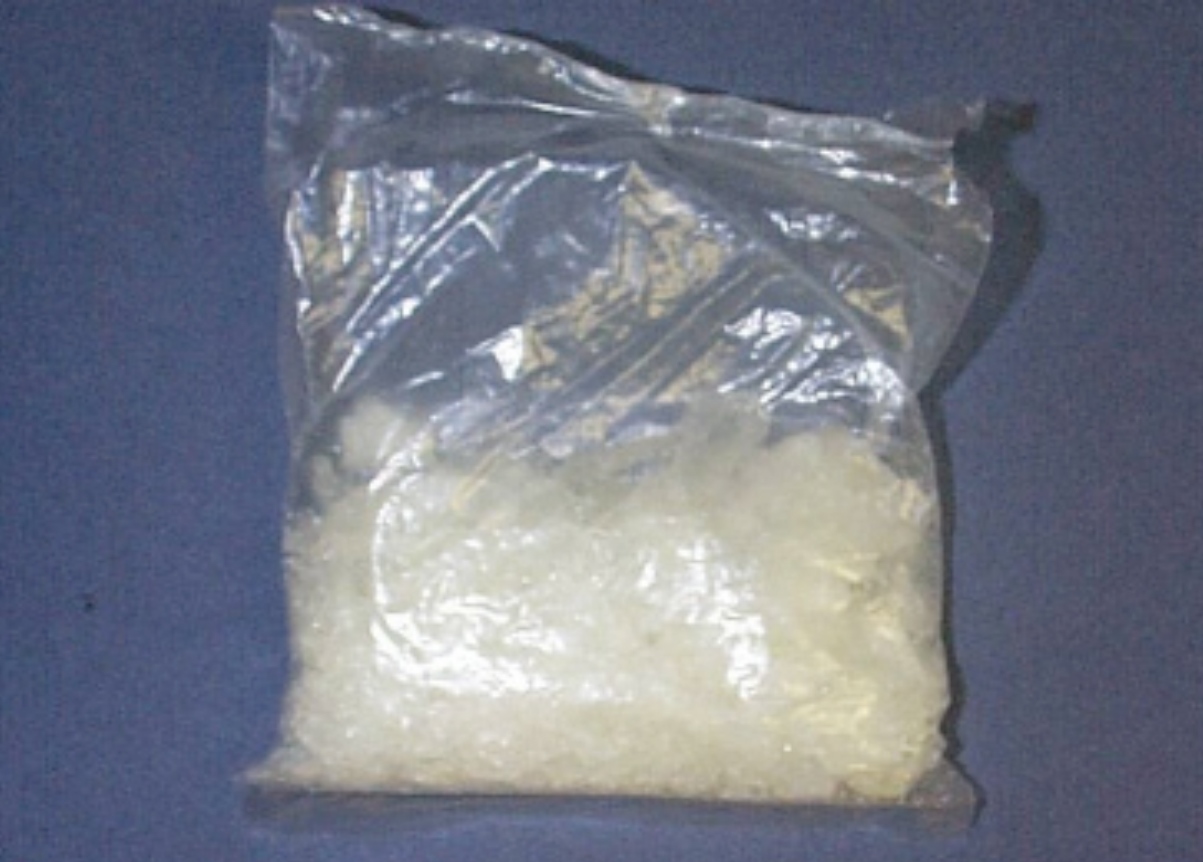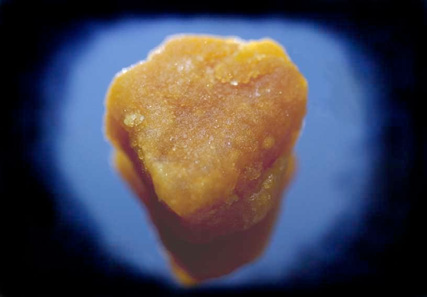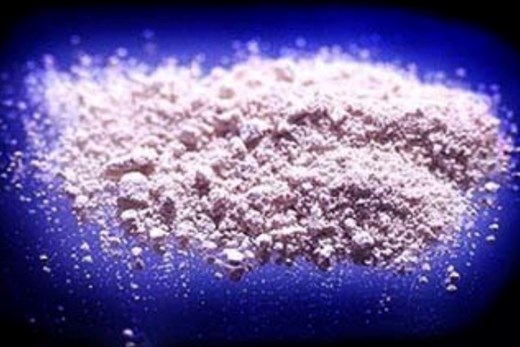What is Methamphetamine?
Methamphetamine comes in three main forms:
 Ice/Crystal meth - Translucent crystals, sometimes shards
Ice/Crystal meth - Translucent crystals, sometimes shards Base - White to brown, thick oily substance
Base - White to brown, thick oily substance
 Speed - White or off-white powder
Speed - White or off-white powder
All forms of methamphetamine can be ‘cut’ (mixed) with other substances, which reduce the purity. Sometimes these other substances can also be harmful. Methamphetamine is often contained in pills sold as MDMA/ecstasy.
Table 1: This table describes the different forms of methamphetamine, potency, common names and uses.
| Form |
Also known as |
Potency |
Mainly used by |
| Ice/Crystal meth |
Shabu, Shabs, Tina, glass, meth, crystal |
Medium to high; this is normally the most potent form |
Smoking, injecting |
| Base |
Pure, point, wax, meth |
Medium to high |
Swallowing, injecting |
| Speed |
Go-ey, meth |
Low to medium |
Snorting, swallowing, injecting |
Ice or crystal usually have higher purity than speed, and for this reason it gives a stronger "high" and lasts longer. It also has stronger side effects while using and in the ‘comedown’ or ‘crash’ phase. There is greater potential for methamphetamine users to become dependent (addiction), develop psychosis, and suffer from long-term physical and mental health problems.
Personal Stories"I didn't know what ice was until my school friend's life fell apart...ice was always viewed as the most extreme drug, and something that almost all my peers would not touch. However, the rare few did, and they completed changed as a person."
How many young people have tried Methamphetamine?
According to the 2022-2023 Australian secondary schools' survey, 1 in 100 students (1%) aged 12-17 used methamphetamines in the past month.
Is "Ice" use increasing in Australia?Survey research suggests that methamphetamine use in Australia has not risen significantly in recent years. In fact, usage has been relatively stable since 2007. However, trend data suggests an increase in ice use among users, compared to other forms such as powder or base.
Are harms from "Ice" use increasing in Australia?While rates of use remain stable, the harms from ice use (e.g. deaths, hospital admissions for dependence and psychosis) have increased.
What are the effects of "Ice"?Methamphetamine takes effect quickly. The effects can last between 4 and 12 hours, although it can take 1 to 2 days for the drug to completely leave the body.
Methamphetamine is a very unpredictable drug. Toxic (and sometimes fatal) reactions can occur regardless of the amount used. This can happen whether the person is a first-time, occasional or regular user. Methamphetamine is more addictive than most other drugs, especially when taken in crystal form.
The effects of Methamphetamine vary, but can be immediate or long term as listed in the table below:
| Immediate |
Long Term |
| Increased heart rate and blood pressure |
Dependence (see glossary) |
| Enlarged pupils |
Dental problems |
| Increased energy |
Heart, kidney and lung problems |
| Feeling of euphoria (a ‘high’) |
Malnutrition and exhaustion |
| Aggressive behaviour |
Depression |
| Trembling |
If injected there is an increased risk of infections like Hepatitis C and HIV |
| Bad headaches and dizziness |
Paranoia (feeling extremely suspicious and frightened) |
| A ‘comedown’ (see glossary) |
Psychosis (see glossary) |
| Insomnia |
Stroke |
| Stomach cramps |
|
| Reduced appetite |
|
| Blurred vision |
|
| Anxiety and panic attacks |
|
| Jaw clenching and teeth grinding |
|

Evidence BaseThis factsheet was developed following expert review by researchers at the Matilda Centre for Research in Mental Health and Substance Use at the University of Sydney, the National Drug & Alcohol Research Centre at the University of New South Wales, and the National Drug Research Institute at Curtin University.
See Teacher Booklet, Parent Booklet or Student Booklet for more information and a list of sources for this information.
For more information about methamphetamine use in Australia and how to get help visit: cracksintheice.org.au.
- Scully, M., Koh, I., Bain, E., Wakefield, M., & Durkin, S. (2023). ASSAD 2022–2023: Australian secondary school students’ use of alcohol and other substances. Cancer Council Victoria.
- Stafford, J. and Burns, L., 2012. Australian Drug Trends 2011. Findings from the Illicit Drug Reporting System (IDRS). Australian
Drug Trend Series No. 73 National Drug and Alcohol Research Centre, University of New South Wales: Sydney.
- Chesher, G., ed. 1993. Pharmacology of the sympathomimetic psychostimulants. Psychostimulant Use in Australia, ed. D.
Burrows, B. Flaherty, and M. MacEAvoy, Australian Government Publishing Service: Canberra.
- Sindicich, N. and Burns, L., 2012. Australian Trends in Ecstasy and related Drug Markets 2011. Findings from the Ecstasy and
Related Drugs Reporting System (EDRS). Australian Drug Trend Series No. 82. National Drug and Alcohol Research Centre,
University of New South Wales: Sydney.
- McKetin, R., McLaren, J. and Kelly, E., 2005. The Sydney methamphetamine market: Patterns of supply, use, personal harms
and social consequences. NDLERF monograph series No. 13, National Drug Law Enforcement Research Fund (NDLERF):
Canberra.
- Cole, C., Jones, L., McVeigh, J., Kicman, A., Syed, Q. and Bellis, M., 2010. Cut: a guide to adulterants, bulking agents and other
contaminants found in illicit drugs, John Moores University: Liverpool.
- Cho, A.K., 1990. Ice: a new dosage form of an old drug. Science 249: p. 631–634.
- McKetin, R., Kelly, E. and McLaren, J., 2006. The relationship between crystalline methamphetamine use and methamphetamine
dependence. Drug and Alcohol Dependence. 85(3): p. 198-204.
- Australian Institute of Health and Welfare, 2017. 2016 National Drug Strategy Household Survey report, AIHW: Canberra.
- Cook, C.E., Jeffcoat, A.R., Hill, J.M., Pugh, D.E., Patetta, P.K., Sadler, B.M., White, W.R. and Perez-Reyes, M., 1993. Pharmacokinetics
of methamphetamine self-administered to human subjects by smoking S-(+)-methamphetamine hydrochloride. Drug
Metabolism and Disposition. 21(4): p. 717-23.
- Seiden, L.S., 1991. Neurotoxicity of methamphetamine: mechanisms of action and issues related to aging. NIDA Research
Monograph. 115: p. 24-32.
- Baicy, K. and London, E.D., 2007. Corticolimbic dysregulation and chronic methamphetamine abuse. Addiction. 102 Suppl 1: p.
5-15.
- Bamford, N.S., Zhang, H., Joyce, J.A., Scarlis, C.A., Hanan, W., Wu, N.-P., Andre, V.M., Cohen, R., Cepeda, C., Levine, M.S.,
Harleton, E. and Sulzer, D., 2008. Repeated exposure to methamphetamine causes long-lasting presynaptic corticostriatal
depression that is renormalized with drug readministration. Neuron. 58(1): p. 89-103.
- McKetin, R., Kaye, S., Clemens, K. and Hermens, D., in press. Methamphetamine, in Encylopaedia of Addictive Behaviours, S.A.
Ball, et al., Editors., Academic Press. : Available on http://mrw.elsevier.com/faqs2/adbv.html.
- National Drug and Alcohol Research Centre, 2012. On Ice booklet, University of New South Wales: Sydney.
- Schuckit, M., 2006. Comorbidity between substance use disorders and psychiatric conditions. Addiction. 101(1): p. 76-88.
- Harris, D. and Batki, S.L., 2000. Stimulant psychosis: symptom profile and acute clinical course. American Journal on Addictions.
9(1): p. 28-37.
- Ellinwood, E., 1971. Assault and homicide associated with amphetamine abuse. The American journal of psychiatry. 127(9):
p. 1170 -1175
- Dawe, S., Davis, P., Lapworth, K. and McKetin, R., 2009. Mechanisms underlying aggressive and hostile behaviour in
amphetamine users. Current Opinion in Psychiatry. 22: p. 269-273.
- Sekine, Y., Ouchi, Y., Takei, N., Yoshikawa, E., Nakamura, K., Futatsubashi, M., Okada, H., Minabe, Y., Suzuki, K., Iwata, Y., Tsuchiya,
K., Tsukada, H., Iyo, M. and Mori, N., 2006. Brain serotonin transporter density and aggression in abstinent methamphetamine
abusers. Archives of General Psychiatry. 63(1): p. 90-100.
- Darke, S., Kaye, S., McKetin, R. and Duflou, J., 2008. Major physical and psychological harms of methamphetamine use. Drug
and Alcohol Review. 27(3): p. 253-62.
- Topp, L. and Mattick, R.P., 1997. Validation of the amphetamine dependence syndrome and the SAmDQ. Addiction. 92(2): p.
151-62.
- McGregor, C., Srisurapanont, M., Jittiwutikarn, J., Laobhripatr, S., Wongtan, T. and White, J.M., 2005. The nature, time course
and severity of methamphetamine withdrawal. Addiction. 100(9): p. 1320-9.